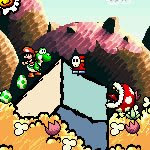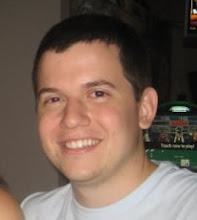 The Super Nintendo Entertaiment System. For anyone who grew up in the 1990's, this might have been their preferred console of choice. Released in August of 1991, it brought graphics and sound that were superior to its #1 rival, the Sega Genesis. Following the success of the NES, the Super Nintendo was another hit for Nintendo. Then came the Sony Playstation. With it's CD-based games and amazing graphical capabilities, Nintendo had to move on. On September 29th, 1996, Nintendo released the Nintendo 64 to North America. Despite the rise of CD-based consoles, Nintendo stuck with cartridges for their new console. Then, one year later, in October of 1997, Nintendo released the Super Nintendo 2, a smaller, lighter version of the Super Nintendo. Why?
The Super Nintendo Entertaiment System. For anyone who grew up in the 1990's, this might have been their preferred console of choice. Released in August of 1991, it brought graphics and sound that were superior to its #1 rival, the Sega Genesis. Following the success of the NES, the Super Nintendo was another hit for Nintendo. Then came the Sony Playstation. With it's CD-based games and amazing graphical capabilities, Nintendo had to move on. On September 29th, 1996, Nintendo released the Nintendo 64 to North America. Despite the rise of CD-based consoles, Nintendo stuck with cartridges for their new console. Then, one year later, in October of 1997, Nintendo released the Super Nintendo 2, a smaller, lighter version of the Super Nintendo. Why?If you have seen my earlier episodes, I have already covered the NES 2. Now, the NES 2 had some noticeable improvements over the original model and was probably worth buying. But what about the SNES 2? Why even buy this model? I'll admit it, it looks alot sleeker and its much more compact, but there is little incentive to upgrade from the older model. But Nintendo didn't make the SNES 2 for those already owning a Super NES. It was for newcomers to video games, and an excellent budget system.
By examining the specifications of the SNES 2, its easy to determine that the SNES 2 was much cheaper to produce than the first model. By taking out features that seemed unnecessary and redesigning the system, Nintendo saved alot of money by scrapping the old model and continuing with the redesigned model. Many gamers thought the Super Nintendo was being redesigned to incorporate the CD based attachment Nintendo was rumored to release. But the SNES 2 had no expansion slot like the original version. The SNES 2 was released in October of 1997, a full year after the Nintendo 64. The Nintendo 64 retailed for 199 dollars, and the Playstation retailed for around 150 dollars.
With the approaching 1997 holiday season, Nintendo surveyed that many people wer
 e still avid 16 bit gamers. They also noticed that many consumers were hesitant to commit to the larger price tags of consoles. Thus, to appeal to those who never had a Super Nintendo, or those who wanted to get into gaming, they released the SNES 2. It retailed for 99 dollars and came bundled with Super Mario World 2: Yoshi's Island. It's a perfect successor to the last Super Nintendo Bundle, which came with Super Mario World. They also released a similar looking model in Japan, named the Super Famicom Jr. Surprisingly, one month later, Nintendo released their last first party game for the Super Nintendo: Kirby's Dreamland 3, on November 27th, 1997.
e still avid 16 bit gamers. They also noticed that many consumers were hesitant to commit to the larger price tags of consoles. Thus, to appeal to those who never had a Super Nintendo, or those who wanted to get into gaming, they released the SNES 2. It retailed for 99 dollars and came bundled with Super Mario World 2: Yoshi's Island. It's a perfect successor to the last Super Nintendo Bundle, which came with Super Mario World. They also released a similar looking model in Japan, named the Super Famicom Jr. Surprisingly, one month later, Nintendo released their last first party game for the Super Nintendo: Kirby's Dreamland 3, on November 27th, 1997.So while not technically a "better" Super Nintendo, the SNES 2 is still a nice substitute for the original. It fits nicely on to shelves, is very lightweight, and it still does what the Super Nintendo is supposed to do: Play games. Production of the Super Nintendo ended in 1999 in North America. By then, the next generation of consoles were in full swing. Still, the Super Nintendo enjoyed a long life span and gave us lots of great games. If you can find a SNES 2, It's a nice piece to add to your collection. I picked mine up at a yard sale for about 10 dollars. If you wanna pay full price, they are about 50 to 60 dollars.
To wrap this up, I wanted to mention that since the SNES 2, Nintendo has not released a redesigned home console in North America. The Nintendo 64 did have some color variations, as did the Gamecube, but thats about it. Will there be a new Wii model for us in the future?...We'll see!


















